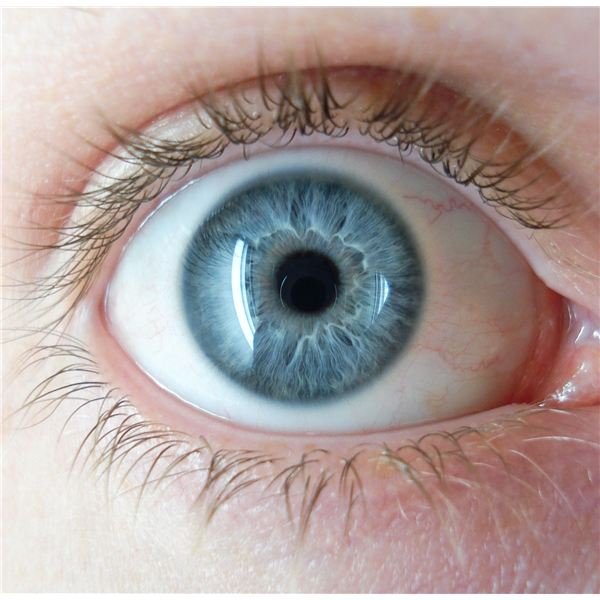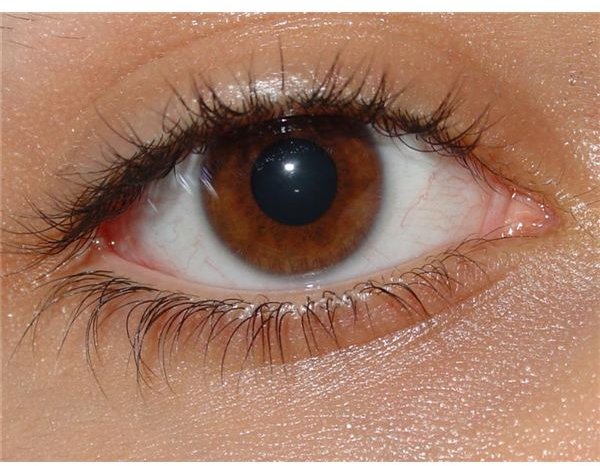Hazel Eyes and Genetics: How Chromosomes are Responsible for Eye Color
What Are Hazel Eyes?
The definition of hazel eyes varies. For some, hazel eyes range from a light brown to a medium golden-green. In North America, “hazel” is a term used to describe eyes that appear to change color, ranging from light brown to green and even gray, depending on lighting in the environment.
Characteristics of Hazel Eyes
A large percentage of hazel eyes have a brown ring around the iris, and either green or blue coloring around the outside of the ring. In the image to the right, you can see the darker inner ring surrounded by a lighter outer ring. To learn more about the subject, read about how genetics affect eye color.
Common Eye Colors

The most common color of eyes is brown and the least common green. There is a variety of colors and shades in between. There are also some unusual eye colors such as red and violet. Brown, green and blue eye color comes from a pigment called melanin. Brown eyes have a lot of melanin in the iris, green eyes have less, and blue eyes have little or no pigment.
Two genes, bey2 and gey, work together to make brown, green, or blue eyes. Each gene has two versions or alleles. One form of bey2 makes lots of melanin (and is usually referred to as B) while the other form makes only a little (b). One form of gey makes some melanin (G) while the other makes only a little (b). Considering these two genes, and the fact that people have two copies of a gene; one from mom and one from dad, then we have the following possibilities for various eye colors:
Brown eyes (BB bb, BB Gb, BB GG, Bb bb, Bb Gb, Bb GG)

Green (bb GG, bb Gb)
Blue (bb bb)
The bey2 and gey genes are names of theoretical genes on chromosome 15 that helps explain some of the genetics of eyes colors. Recent studies have discovered that the bey2 gene is actually the OCA2 gene.
The Genetics Behind Hazel Eye Coloring
The genetics of hazel eyes is not clear yet and has received little research attention. There are only models that try to explain it. One model is explained by Dr. Barry Starr, from Stanford University. However, it is only a model and many others may surface soon.
According to Dr. Starr, a new gene (yet to be found) could be a modifier gene of the gey gene. This gene, named M could produce hazel eyes by having the gey make more melanin. As with any gene, the M gene comes with two alleles, the M which increases the amount of melanin gey makes and the m which has no effect.
Studying the possible combinations of the G (gey) and the M (modifier) genes it would be possible to explain (theoretically) hazel eyes. Anytime you get the G with the M gene you will get hazel eyes (according to this model). So, if a person has the following combinations: GGMM, GbMM, GGMm, and GbMm he (or she) will have hazel eyes. If the person has GGmm and Gbmm he will have green eyes and if he (or she) has bbMM, bbMm, or bbmm he or she will have blue eyes.
Hazel eye color genetics will of course become clearer one day, but for the moment it’s models such as Starr’s that give us the best insights.
Genetics is also responsible for human characteristics such as blue eyes, blonde hair, and red hair.
Sources
Genetic determinants of hair, eye and skin pigmentation in Europeans. By Patrick Sulem et al. Nature Genetics 39, 1443 - 1452 (01 Dec 2007)
Dr Barry Starr (https://www.thetech.org/genetics/ask.php?id=126).
